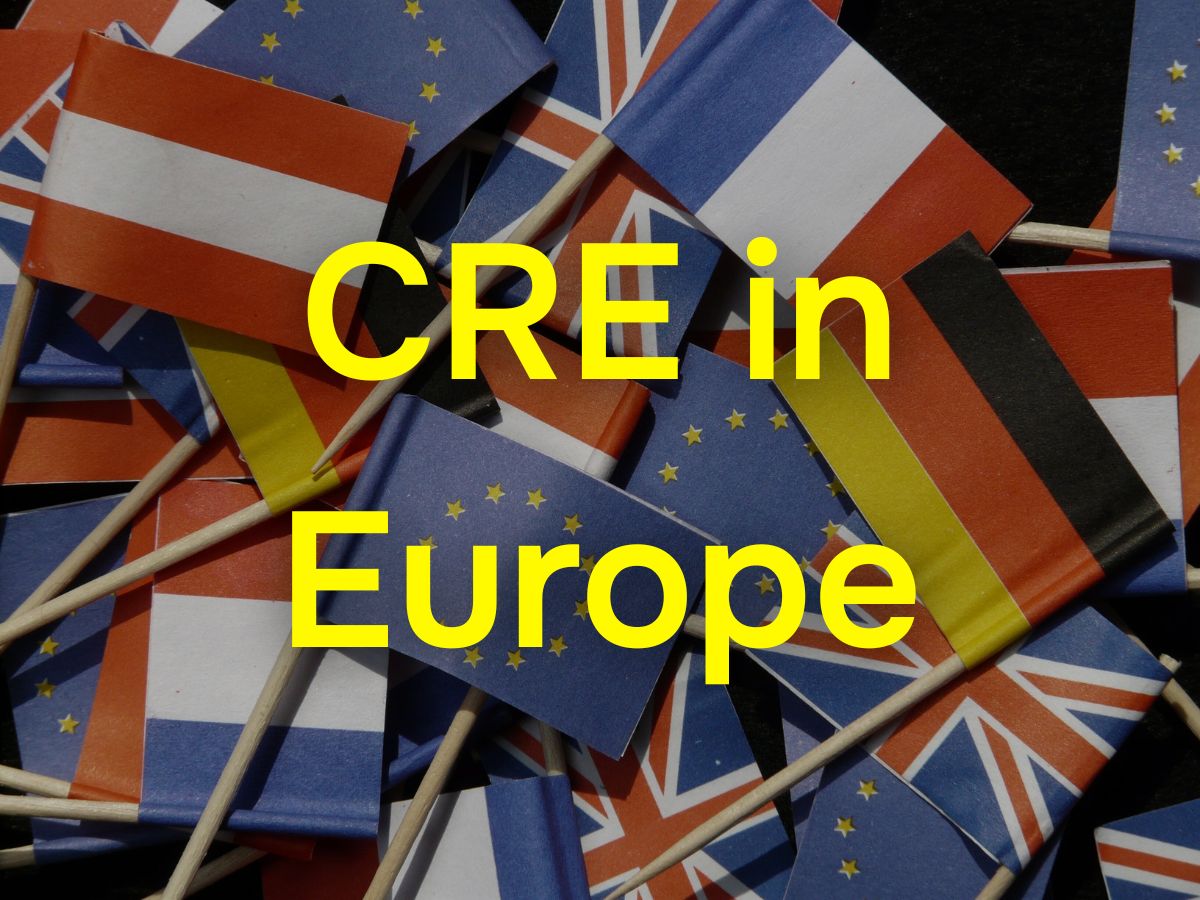Europe’s commercial real estate (CRE) market remains subdued, with transaction volumes at decade lows and financing conditions still tight. But while investor caution persists, selective opportunities are emerging as major players pivot portfolios to more resilient sectors.
Europe’s commercial real estate: liquidity crunch, but opportunities emerging


Weak property volumes, soft investment sentiment
European commercial property sales were flat in Q1 2025 at €47.8 billion ($55.6 billion), according to revised MSCI data, roughly half of 2022 levels. Knight Frank reported cross-border investment into Europe, the Middle East, and Africa fell nearly 20% year-on-year in Q2 to €17.2 billion, the weakest April–June period in a decade (Reuters).
Investor sentiment has followed suit. INREV’s June survey showed confidence in European real estate at its lowest level in over a year, echoing declines in the U.S. market.
Distressed assets, limited deals
Distress is rising across the continent. Brookfield restructured debt on its London CityPoint tower after shelving a planned sale, while Frankfurt’s Trianon skyscraper has been put up for sale by administrators. Still, transactions remain scarce.
“We have ‘zombieland’, no recovery, stranded assets, no liquidity coming back,” said Sebastiano Ferrante, head of European real estate at PGIM. (source Reuters)
Strategic retail pivots provide hope
Amid the slowdown, some groups are rebalancing portfolios toward higher-yielding sectors. London-listed REIT Landsec has invested nearly £1bn since 2021 in major shopping centres including Bluewater, Liverpool One and St David’s in Cardiff.
The strategy is delivering results. Sales across its retail destinations rose 8.4% in the past year, footfall climbed 8.1%, and occupancy improved by up to 10%. Lease deals were agreed at an average 12% above estimated rental values.
“Major retail investment remains our highest conviction call, given the high-income yield, attractive income growth and lack of new supply,” said CEO Mark Allan. Retail now accounts for 25% of Landsec’s portfolio value and nearly 40% of income, a figure expected to rise to 50%.

Property sector divergence
Older office stock and secondary retail continue to struggle, while even data centres have slowed amid rising costs. By contrast, logistics, hotels, and residential rental assets remain in demand, supported by e-commerce, tourism recovery and chronic housing shortages across major European cities.
Germany illustrates the pressure. CBRE data shows transaction volumes down 2% in H1 2025. “Transaction volumes will not jump. It will not kickstart in a very dynamic way,” said JLL Germany CEO Konstantin Kortmann.
Competition for real estate capital
Private credit is also drawing capital away. European private credit funds raised $39.9 billion in H1 2025, almost double the $20.6 billion secured by real estate funds (Reuters). With higher yields and lower transaction risk, private credit is pulling some investors away.
Yet this shift also highlights the potential reward for CRE players who can offer stronger income growth. Landsec’s 12% above-market lease agreements on its retail assets stand in stark contrast to the muted returns on older office buildings.
Commercial real estate outlook
Market liquidity is unlikely to return quickly, but selective bets are delivering. Landsec’s retail repositioning highlights the opportunity for CRE businesses to pivot into sectors with stronger demand fundamentals.
While older offices and malls remain under structural pressure, growth in logistics, hospitality, rental housing and prime retail suggests that the market is fragmenting, not failing. Agility, capital recycling and sector specialism are emerging as key strategies in Europe’s new CRE landscape.